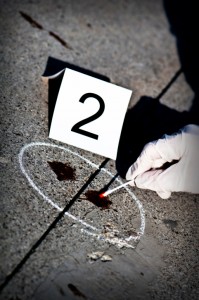* This article is part of In Public Safety’s series recognizing Sexual Assault Awareness Month.*
By Dena Weiss, professor of criminal justice at American Military University
Approximately 293,000 sexual assaults occur in the United States each year and 84 percent of these assaults reported the use of physical force (PDF). Processing these crime scenes properly is a critical step in the process of prosecuting the offenders.
Sexual assaults are actually two crime scenes—one is the location of the occurrence and the other is the body of the victim. These scenes require a comprehensive crime scene search, swift examination, and questioning of the victim.
What to Expect from the CSI

Sexual assault cases where the offender is a stranger will yield many opportunities to collect DNA foreign to the victim. Body fluids may be collected from the location of the assault which may include bed sheets, furniture, carpeting, or a vehicle. Examination of the scene using ultra-violet light will often assist in identifying body fluid stains such as semen and saliva. Relevant items are either collected or cuttings are collected and retained for analysis.
[Related article: Tips for How First Responders Can Help Preserve Key Evidence]
Used tissues, towels, or other items the offender may have used to clean himself or the victim need to be examined carefully. Checking to see if the offender ejaculated on an item at the scene, used the bathroom, or left behind a condom is an important part of the crime scene examination as well. If the suspect is caught in the act or shortly after, penile swabs should be collected as well as undergarments for the analysis of transfer DNA.
Collection of DNA
Touch DNA can now be used to link a suspect to a crime scene without the presence of body fluids. Touch DNA consists of epithelial cells that are sloughed from an individual’s hands when they grasp and item.
[Related article: Law Enforcement Investigation Tools Expand Beyond DNA to Bacteria]
The CSI should collect sterile swabbings of any items that may have been touched by the suspect at the crime scene such as:
- Weapons
- Utensils or cups
- Clothing torn off of victim
- Door knobs or window entry points
- Toilet seat or handle
The victim should be advised not to bathe or change his or her clothes before being examined at the hospital. The hospital will conduct a physical exam and collect a sexual battery kit which includes:
- Head and pubic hair samples
- A liquid blood sample
- Saliva sample
- Fingernail clippings
- Head and pubic hair combings
- Anal, oral, and vaginal swabs and slides
The victim will be asked to remove clothing over clean white paper in order to collect any trace evidence such as hairs or fibers that may have been attached. Documentation of injuries to include bite marks and bruises should be completed at this time.
Why Collecting These Items is Important
What are the benefits of each of these items? Hair foreign to the victim could possibly contain a root which would allow for DNA analysis. Swabbings and slides may contain foreign saliva or semen which could lead to the suspect. Fingernail clippings may harbor foreign skin cells which could be traced to the suspect. A liquid blood sample is collected to conduct a toxicology screen for date rape drugs such as Rohypnol. Lastly, samples from the victim are used to eliminate the victim’s profile from any other DNA profile that is found.
Weaknesses of these items can be that foreign hair is inadequate evidence if it does not contain a root, swabbings for semen will show results of sexual activity from the last three days, and semen on anal swabs are often destroyed by bacteria before results are obtained.
Sexual assault cases are often a challenge to the CSI due to the following circumstances:
- Delay in victim reporting of the crime
- Neurological and physical trauma experienced by the victim affecting memory
- Contamination of the crime scene
- Evidence destroyed by the offender
- Evidence unintentionally destroyed by the victim
With the advent of technology such as touch DNA, even assaults where biological fluids are not found now can be solved and offenders prosecuted.

Dena has a bachelor’s degree in chemistry and sociology from Mary Baldwin College and a master’s degree in forensic science from Virginia Commonwealth University. She is currently working on her PhD in business administration with an emphasis in criminal justice.
Comments are closed.